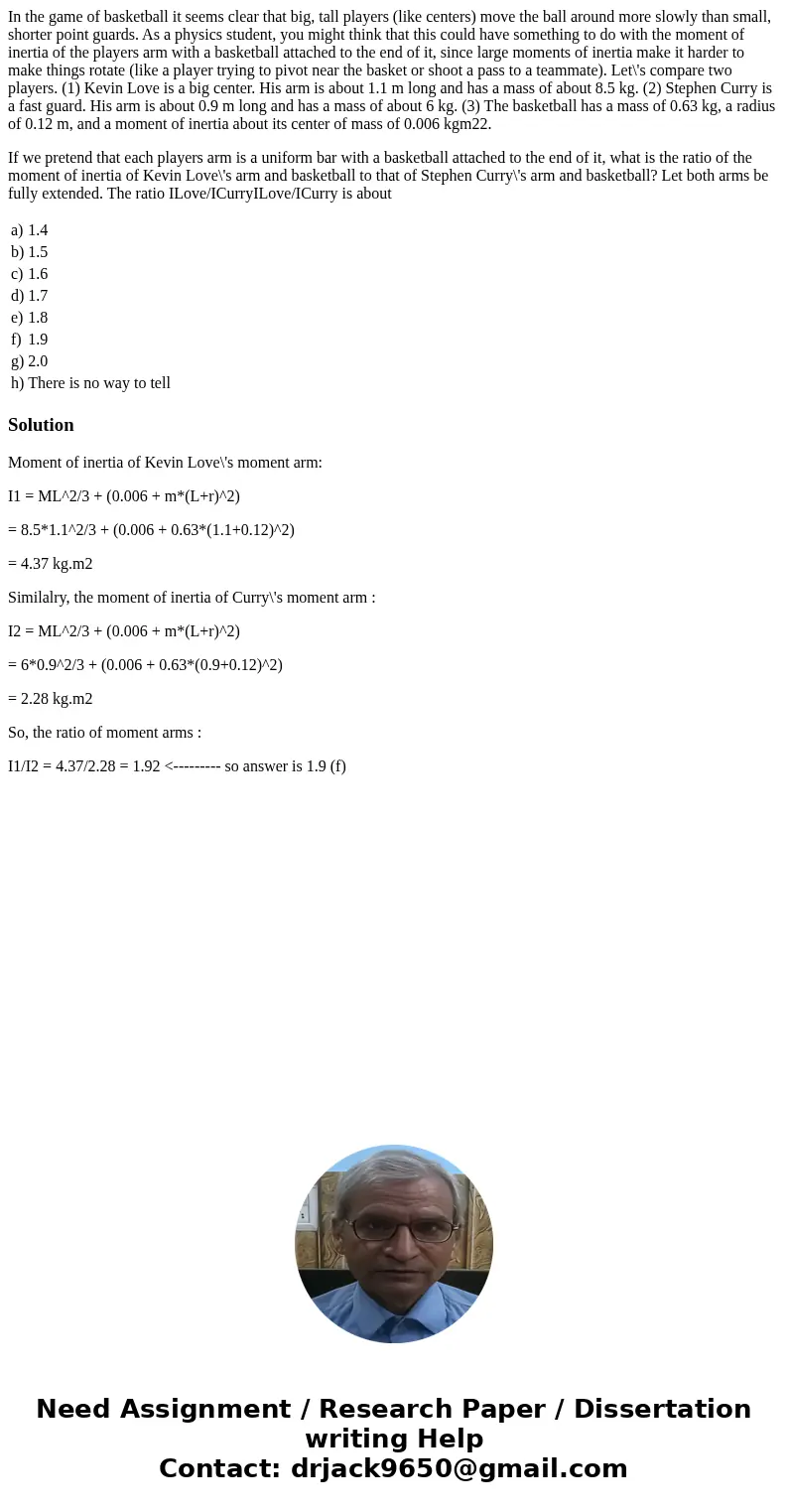In the game of basketball it seems clear that big tall playe
In the game of basketball it seems clear that big, tall players (like centers) move the ball around more slowly than small, shorter point guards. As a physics student, you might think that this could have something to do with the moment of inertia of the players arm with a basketball attached to the end of it, since large moments of inertia make it harder to make things rotate (like a player trying to pivot near the basket or shoot a pass to a teammate). Let\'s compare two players. (1) Kevin Love is a big center. His arm is about 1.1 m long and has a mass of about 8.5 kg. (2) Stephen Curry is a fast guard. His arm is about 0.9 m long and has a mass of about 6 kg. (3) The basketball has a mass of 0.63 kg, a radius of 0.12 m, and a moment of inertia about its center of mass of 0.006 kgm22.
If we pretend that each players arm is a uniform bar with a basketball attached to the end of it, what is the ratio of the moment of inertia of Kevin Love\'s arm and basketball to that of Stephen Curry\'s arm and basketball? Let both arms be fully extended. The ratio ILove/ICurryILove/ICurry is about
| a) | 1.4 |
| b) | 1.5 |
| c) | 1.6 |
| d) | 1.7 |
| e) | 1.8 |
| f) | 1.9 |
| g) | 2.0 |
| h) | There is no way to tell |
Solution
Moment of inertia of Kevin Love\'s moment arm:
I1 = ML^2/3 + (0.006 + m*(L+r)^2)
= 8.5*1.1^2/3 + (0.006 + 0.63*(1.1+0.12)^2)
= 4.37 kg.m2
Similalry, the moment of inertia of Curry\'s moment arm :
I2 = ML^2/3 + (0.006 + m*(L+r)^2)
= 6*0.9^2/3 + (0.006 + 0.63*(0.9+0.12)^2)
= 2.28 kg.m2
So, the ratio of moment arms :
I1/I2 = 4.37/2.28 = 1.92 <--------- so answer is 1.9 (f)

 Homework Sourse
Homework Sourse